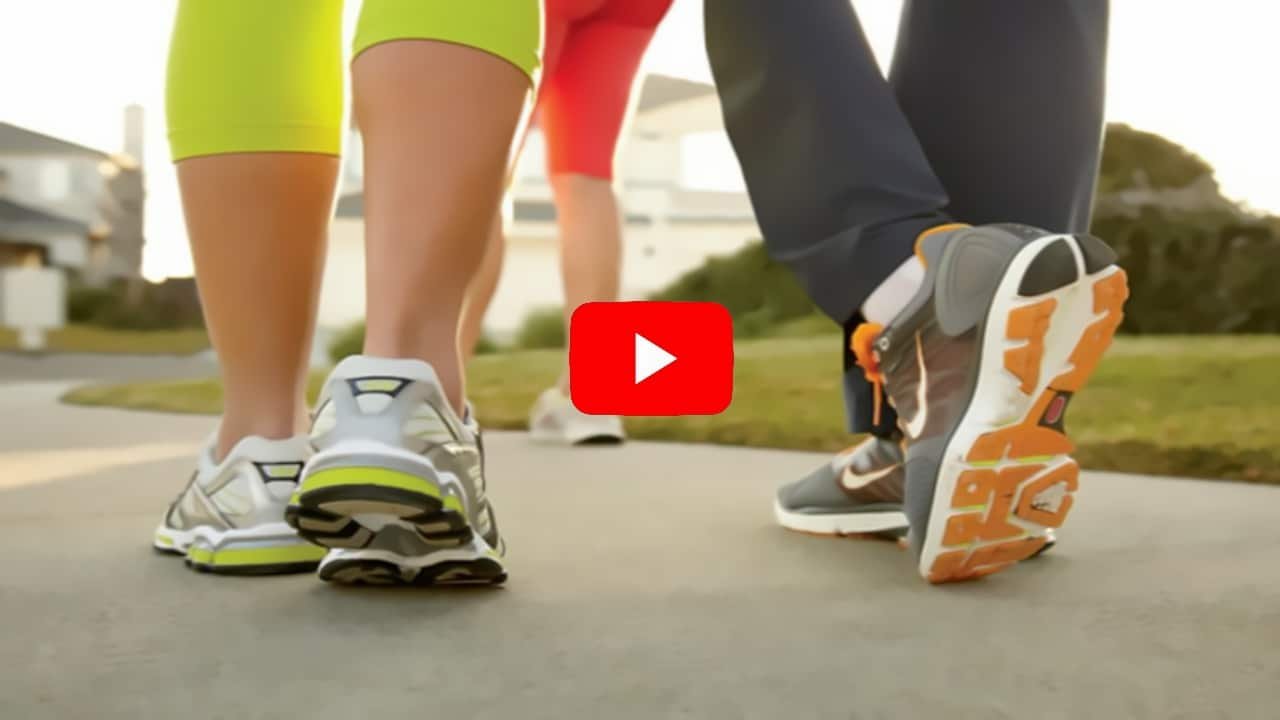Exploring the Walking Benefits: A Gateway to Health and Fitness
Walking is often overlooked as a form of exercise, yet it offers a multitude of benefits that extend beyond mere physical fitness. It is a low-impact activity that can be easily integrated into daily routines, making it accessible to people of all ages and fitness levels. Walking not only helps in maintaining a healthy weight but also enhances cardiovascular health, strengthens bones and muscles, and improves mood and mental well-being. This simple activity can be a powerful tool in combating a sedentary lifestyle, which is increasingly common in modern society.
Furthermore, walking is a natural way to increase energy levels and reduce fatigue. It promotes better sleep, boosts the immune system, and even enhances creativity and cognitive function. By making walking a regular part of your routine, you can experience a holistic improvement in your overall quality of life. Walking also offers a unique opportunity to connect with nature, providing a calming effect that can help reduce stress and anxiety. As you walk, you engage multiple muscle groups, which contributes to improved posture and balance. The rhythmic motion of walking can also stimulate the production of endorphins, the body’s natural mood elevators, leading to a sense of well-being and happiness.
The Japanese Walking Method: A Cultural Approach to Fitness
The Japanese walking method, often referred to as “Namba Aruki,” is a centuries-old technique that emphasizes a natural and harmonious way of moving. This method is rooted in the traditional practices of samurai warriors, who mastered the art of efficient and graceful movement. The technique involves walking with a slight forward lean, using the whole body in a coordinated manner, and taking shorter, quicker steps.
This method not only enhances balance and coordination but also increases the efficiency of your walk, allowing you to cover more distance with less effort. By adopting the Japanese walking method, individuals can achieve a more mindful and meditative walking experience, which contributes to both physical and mental well-being. The Namba Aruki technique encourages a focus on breathing and posture, fostering a deeper connection between the mind and body. This mindful approach to walking can lead to a heightened awareness of one’s surroundings, promoting a sense of peace and tranquility. Additionally, the Japanese walking method can be practiced anywhere, making it a versatile and convenient option for those seeking to incorporate more movement into their daily lives.
Lose Weight Walking: The Path to Effortless Fat Loss
Walking is a highly effective way to lose weight, as it helps to burn calories and improve metabolism. Unlike high-intensity workouts, walking is gentle on the joints and can be sustained for longer periods, making it an ideal choice for those looking to shed pounds without straining their bodies. By incorporating walking into your daily routine, you can create a calorie deficit, which is essential for weight loss.
To maximize weight loss through walking, it is important to maintain a brisk pace and incorporate variations such as interval walking, where you alternate between fast and slow paces. This approach helps to elevate the heart rate and boost calorie burn, leading to more effective weight loss results. Additionally, walking on varied terrains, such as hills or trails, can further enhance calorie expenditure and engage different muscle groups, resulting in a more comprehensive workout. To track your progress, consider using a fitness tracker or smartphone app to monitor your steps, distance, and calories burned. This data can provide valuable insights into your walking habits and help you make informed adjustments to your routine for optimal results.
Designing a Weight Loss Walking Plan: Steps to Success
Creating a structured walking plan is crucial for those aiming to lose weight through walking. Begin by setting realistic goals and gradually increasing the duration and intensity of your walks. Aim for at least 30 minutes of brisk walking most days of the week, and consider incorporating longer walks on weekends.
In addition to regular walks, it is beneficial to track your progress using a pedometer or fitness app. This will help you stay motivated and ensure that you are meeting your daily step goals. Remember to listen to your body and adjust your plan as needed to prevent injury and maintain motivation. Incorporating rest days into your schedule is also important to allow your body time to recover and prevent burnout. To add variety to your walking plan, consider exploring different routes or joining a walking group to make the experience more enjoyable and engaging. By setting achievable milestones and celebrating your progress along the way, you can maintain motivation and stay committed to your weight loss journey.

“If you’re serious about boosting your weight loss results naturally, check out my favorite science-backed supplements here 👉 https://justpaste.it/hyu2r“
Walking for Health: Beyond Weight Loss
While weight loss is a common goal for many walkers, the health benefits of walking extend far beyond shedding pounds. Regular walking can significantly reduce the risk of chronic diseases such as heart disease, diabetes, and certain cancers. It also helps to lower blood pressure, improve cholesterol levels, and enhance respiratory function.
Walking is also beneficial for mental health, as it reduces stress, anxiety, and depression. The rhythmic nature of walking, combined with the opportunity to connect with nature, provides a therapeutic effect that contributes to overall well-being. By prioritizing walking as a daily habit, individuals can enjoy a healthier and more balanced lifestyle. Walking can also improve cognitive function and memory, making it an excellent activity for individuals of all ages. Engaging in regular walks can enhance brain health by increasing blood flow to the brain and stimulating the growth of new neural connections. This can lead to improved focus, concentration, and mental clarity, allowing you to perform better in daily tasks and activities.
Walking for Fitness: A Comprehensive Approach
Walking is a versatile form of exercise that can be tailored to meet various fitness goals. Whether you are looking to improve endurance, build strength, or enhance flexibility, walking can be adapted to suit your needs. Incorporating elements such as hill walking, speed walking, or walking with weights can add variety and challenge to your routine, helping to improve overall fitness levels.
Additionally, walking can be combined with other forms of exercise, such as yoga or strength training, to create a well-rounded fitness regimen. By integrating walking into your fitness plan, you can enjoy a sustainable and enjoyable approach to staying active and healthy. Walking can also serve as a foundation for cross-training, allowing you to diversify your workouts and prevent overuse injuries. By alternating between walking and other activities, such as cycling or swimming, you can reduce the risk of injury and promote overall fitness. Furthermore, walking can be a social activity, providing an opportunity to connect with friends and family while staying active. Whether you choose to walk alone or with others, the key is to make it a consistent and enjoyable part of your lifestyle.
Developing a Walking Program for Weight Loss: A Structured Guide
To create an effective walking program for weight loss, start by assessing your current fitness level and setting achievable goals. Begin with shorter walks and gradually increase the duration and intensity as your fitness improves. Aim to incorporate a variety of walking styles, such as interval walking, hill walking, and power walking, to keep your routine engaging and challenging.
Consistency is key to success, so strive to make walking a regular part of your daily routine. Consider walking with a friend or joining a walking group to stay motivated and accountable. Remember to celebrate your progress and adjust your program as needed to keep it aligned with your goals. To enhance the effectiveness of your walking program, pay attention to your posture and form. Maintain an upright posture, engage your core muscles, and swing your arms naturally to maximize the benefits of your walks. Additionally, focus on maintaining a steady, rhythmic pace that challenges your cardiovascular system while allowing you to converse comfortably. By incorporating these elements into your walking program, you can achieve your weight loss goals while enjoying the numerous health benefits that walking has to offer.
Unveiling the Health Benefits of Walking: A Path to Well-being
The health benefits of walking are vast and encompass both physical and mental aspects. Physically, walking helps to maintain a healthy weight, strengthen bones and muscles, and improve cardiovascular health. It also enhances balance and coordination, reducing the risk of falls and injuries.
Mentally, walking provides an opportunity for relaxation and reflection, helping to alleviate stress and boost mood. The act of walking releases endorphins, which are natural mood enhancers, and can lead to improved mental clarity and focus. By embracing walking as a regular practice, individuals can experience a profound transformation in their overall health and well-being. Walking can also foster a sense of community and connection, as it provides an opportunity to engage with others and explore new environments. Whether you choose to walk in nature, through urban landscapes, or in your local neighborhood, the simple act of walking can promote a sense of belonging and enhance your overall quality of life. By making walking a priority, you can unlock a wealth of health benefits that contribute to a happier, healthier, and more fulfilling life.
Conclusion: Embracing the Journey of Walking
Mastering the art of Japanese walking offers a unique and effective approach to fitness and weight loss. By understanding and incorporating the principles of this ancient technique, individuals can unlock a myriad of health benefits and achieve their fitness goals with ease. Walking is a simple yet powerful tool that can lead to a healthier, happier, and more balanced life. Embrace the journey of walking and discover the transformative power it holds. As you embark on this path, remember that walking is not just a means to an end, but a journey in itself. It is an opportunity to connect with yourself, your surroundings, and others, fostering a sense of mindfulness and presence. By making walking a regular part of your life, you can cultivate a deeper appreciation for the world around you and experience the joy and fulfillment that comes from living an active and healthy lifestyle.
“If you’re serious about boosting your weight loss results naturally, check out my favorite science-backed supplements here 👉 https://justpaste.it/hyu2r“







